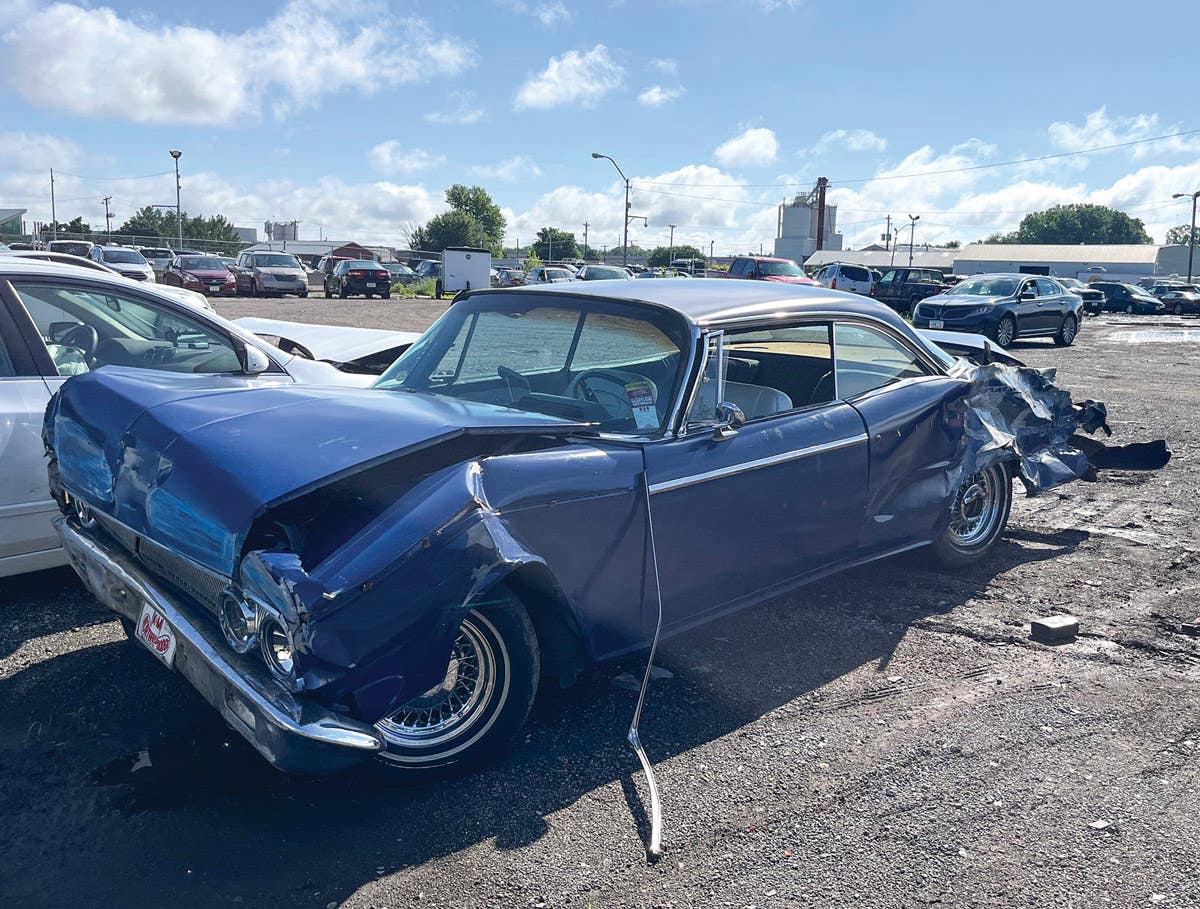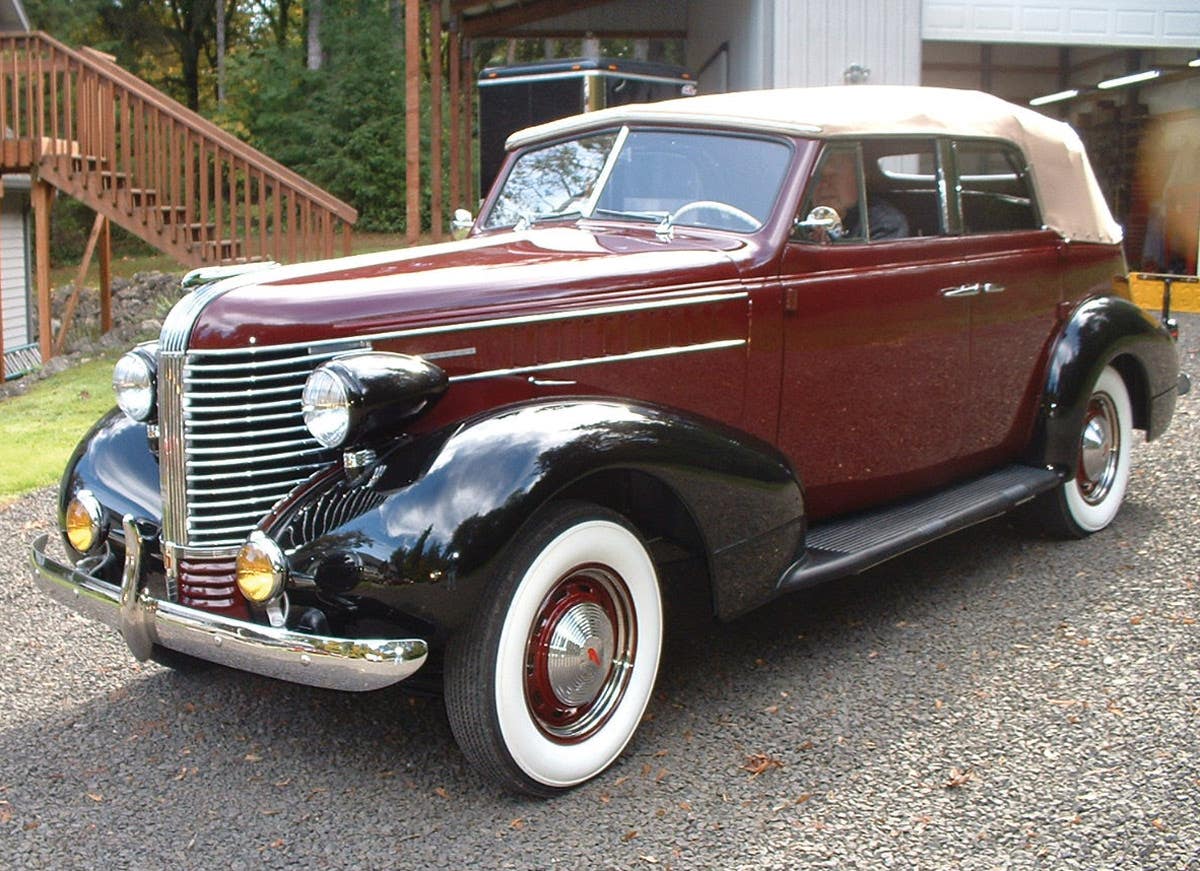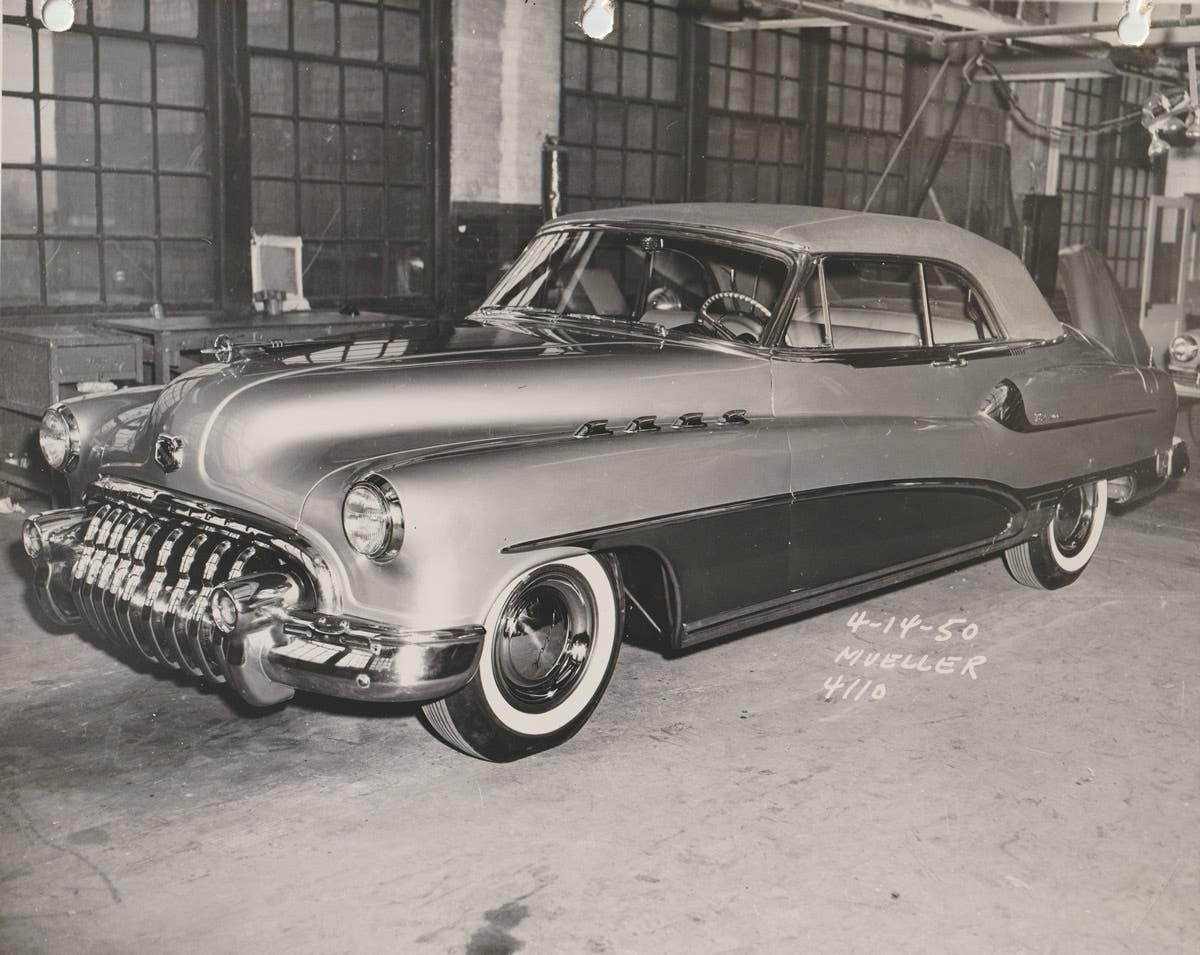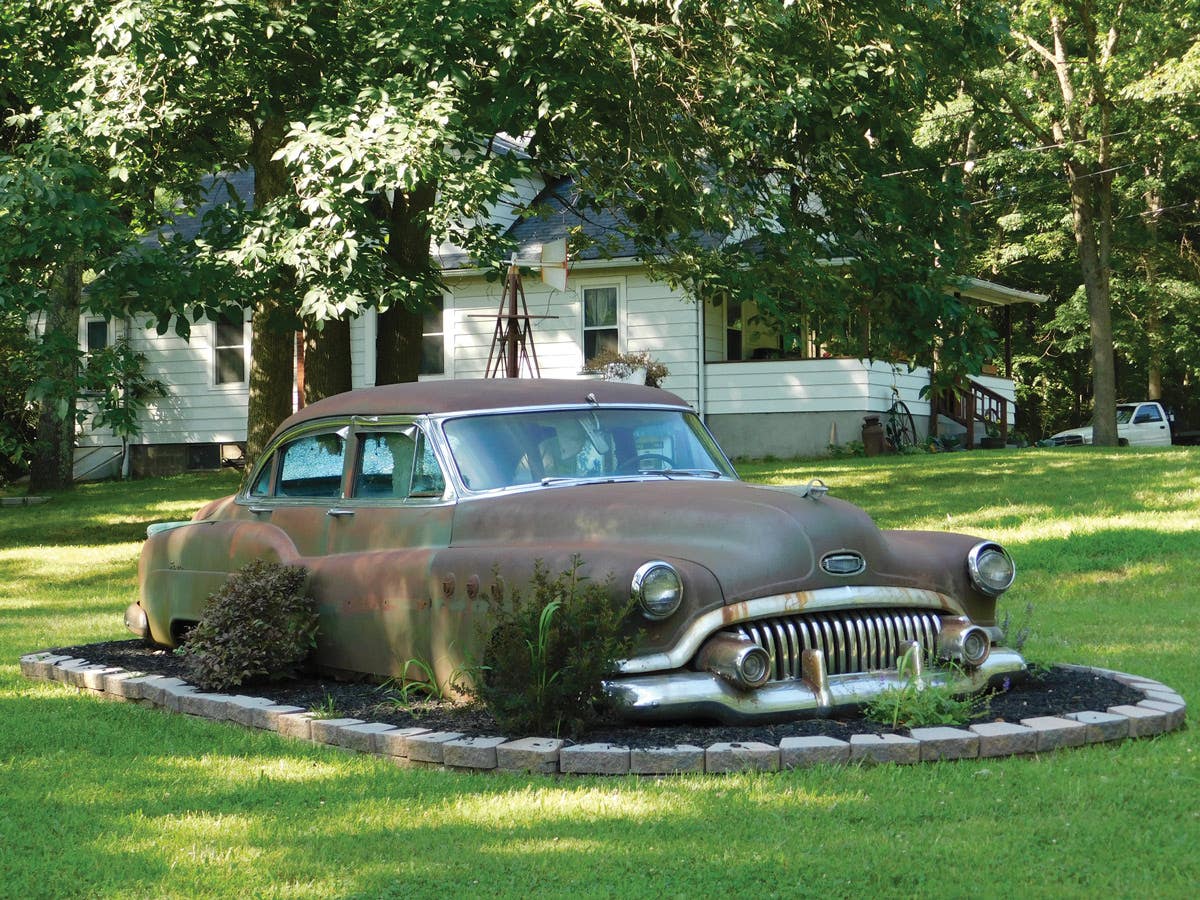[Editor’s note: Joe Bortz is a Chicago-based car collector famous for saving and restoring concept cars. The following is his recollection of happening upon the first Futurliner he ever saw in person and what followed.]
Concept car collector Joe Bortz found five of the 12 Futurliners in
the late 1980s and saved them from an unusual, and surely
devastating, fate. Here, seven of the 12 Futurliners are seen crossing
America in better days, and completing the task for which they were
built: showcasing General Motors innovations.
By Joe Bortz
It was in the late ’80s when my high school friend Al Gartzman said he was sure that he had a lead on a gentleman who owned one of the Futurliner buses, one of those special vehicles built by General Motors for its Parade of Progress events in the 1940s and ’50s. Gartzman knew that I was into everything related to ’50s “dream cars,” particularly concept vehicles from GM.
In my first conversation with the Futurliner owner, Mike C., I learned he not only had one of the Futurliner buses, but he had it parked in his backyard. How could that be, a GM Futurliner in a backyard? Computers didn’t exist for me at that time, and I asked Mike to send me a picture. Sure enough, there was a Futurliner in his suburban Chicago backyard. Over the next several months, we continued our conversations and he slowly revealed that he might have two Futurliners, then three, then four and then, in the end, five of them. I was very content to know where almost half of the Futurliners were, but I didn’t have a desire to own anything that big — especially multiplied by five!
After about a year of our conversing on the phone, Mike invited me to pay a visit to his backyard, where I got to feast my eyes on a Futurliner. It was bigger, much bigger, than I ever realized from pictures. And, I have to say that I was awe struck. At that point, I was still content to let him be the owner and for me to be the viewer.
Five of the Futurliners nearly became part of a restaurant. These
plans show plans for that restaurant, which would have copied
Chicago’s Victoria Station, which used freight cars rather than GM buses.
I always wondered why he collected five Futurliners, and in a moment of truth during one of my visits, Mike decided to fess up. He went into his house and showed me sketches and blueprints of what his real intentions were for the buses. He said, “Joe, I know that you are in the restaurant and night club business, you are really going to love my idea.”
One of my favorite restaurants is Victoria Station. (For those not familiar with Victoria Station, it was a restaurant with a central core from which freight cars rayed out. Customers would be seated at tables in the freight cars.) I remember getting goose bumps at the thought of the GM Futurliners being torched so that they could be used for restaurant seating. I knew at that very moment that I was going to have to intercede.
Therein began the discussions for me to purchase the buses and save them from a fate worse then the crusher — to live the rest of their lives as torched and disfigured pieces of metal. Weeks later, Mike and I agreed upon a price, and at that moment, I had to decide what to do with the buses. Like my mother used to say at dinner, “Sometimes my eyes were bigger than my stomach.” My plans, at one point, were to restore all five buses and to keep them as part of the Bortz Collection of dream cars, design study and concept cars. Three of these buses were moved in front of a building that I had on Highway 41, a busy road between Chicago and Milwaukee. The moving fee for buses of this size was a minimum of $1,000, whether they went a block or five miles. After that distance, there was more mileage fees. Several years later, these buses were in front of my storage building on the highway, and never did I go up to the building when there wasn’t a group of people crawling over the buses.
Another idea that crossed my mind was to take one bus and set up the back end so I could fit in the 1954 Pontiac Bonneville Special. I thought it would be neat to arrive at a show with the Futurliner, and after the crowd calmed down, lift up the sides to reveal the 1954 Bonneville Special.
Reality soon set in, and I realized that the cost to restore one bus, much less five, would be enormous. Plus, there was the added trouble and expense of storing five buses. I realized that it wasn’t in the cards to accomplish such a grandiose scheme of rebuilding, restoring and housing almost half the fleet of GM Futurliners while I still had other dream cars to restore.
I decided the best thing to do was offer the buses to others who could carry on the task of preserving and ultimately restoring the fleet of five. Four of the buses were placed in the hands of private individuals, including the two Canadian gentlemen who paid me the most that I ever got for one bus — $1,800. I knew that the perfect museum for the fifth bus would be the National Automobile & Truck Museum of the United States at Auburn, Ind. That bus has been fully restored and now tours the nation every summer. Obviously, the result of that decision will guarantee the place for the iconic Futurliner in the history books.
Having saved the five buses from being cannibalized will always be a point of pride in what has become my “calling” to preserve dream cars and concept cars. These iconic automotive artifacts were created by the best designers in the most important period of American automotive design. It is my sincere hope that General Motors, in its current passage, will preserve the history of vehicles they currently hold, and that those treasures will not be lost to future generations.
Catch the restored Futurliner #10 at the 2010 Iola Old Car Show. Go to www.futurliner.org or www.iolaoldcarshow.com for more information, or call 715-445-4000.
The sides of the Futurliners opened to reveal displays of the latest technology offered
by General Motors.
Restoration resources:
- Old Cars Guide to Auto Restoration CD, Vol. 2
- Automotive Restoration Online Seminar Download
- Eddie Paul's Paint and Body Work Handbook
More Resources For Car Collectors:
- Classic car price guides, research, books, back issues of Old Cars Weekly & more
- Get expert restoration advice for your classic car
- Get car pricing, data and history all in one place
- Sign up for Old Cars Weekly's FREE email newsletter
- Need to buy or sell your classic car? Looking for parts or memorabilia? Search our huge online classified marketplace







